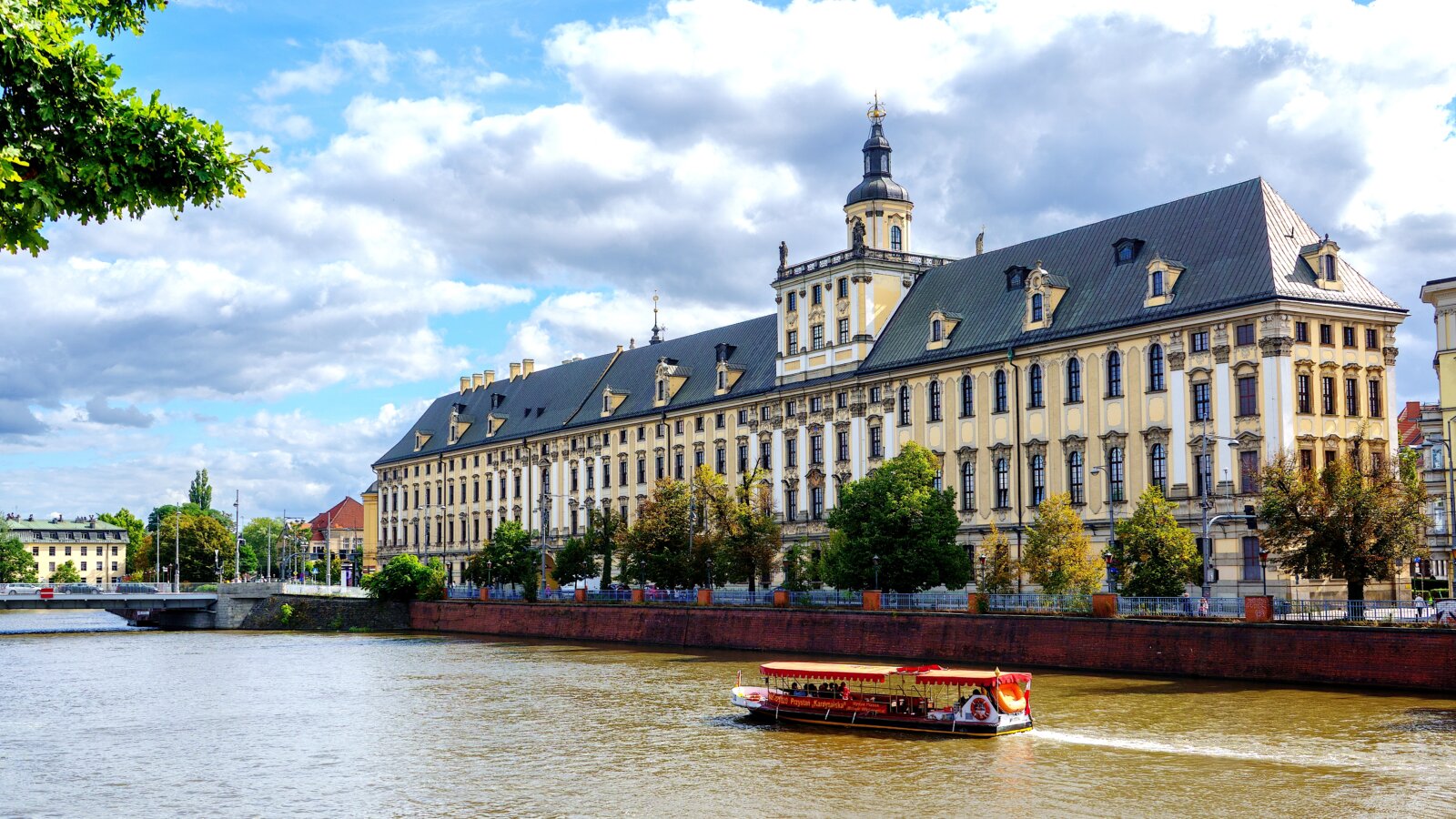
 From the Leopoldina to the University of Wrocław – Three Centuries of Academic History
From the Leopoldina to the University of Wrocław – Three Centuries of Academic History
‘On 15 November 1702, an institution opened in Wrocław that would permanently alter the intellectual landscape of Silesia. That day, at the Jesuit college on the Oder, the Leopoldina Academy commenced its work, laying the foundation for what would become the University of Wrocław. For more than three hundred years – despite changing borders, languages and political systems – the building has remained the city’s academic heart,’ writes Jolanta PAWNIK
.The story of the University of Wrocław began with a delay of two centuries. King Vladislaus II had approved the founding charter of the Universitas Wratislaviensis in 1505, yet the project was halted by resistance from the pope and scholars of the Kraków Academy, anxious about competition and the loss of students.
What followed was a long stretch of opposition, political tensions and wars that kept the idea dormant. The breakthrough came only with Emperor Leopold I, who on 1 October 1702 signed the so-called golden founding bull establishing a Jesuit academy named the Leopoldina. Teaching in the faculties of philosophy and theology formally began on 15 November 1702 – a date now recognised as the university’s birth. The first chancellor, Johannes Adrian von Plencken, a senior Silesian official, gave firm support to the Jesuit initiative.
The Leopoldina emerged at a very specific historical moment. Wrocław was then predominantly a Protestant city, and the new Catholic institution became an important instrument of Habsburg policy and of the Counter-Reformation in Silesia. It educated clergy and Catholic elites, while also attracting notable scholars and students, gradually building its reputation as a centre of learning.
Throughout the eighteenth century, the Leopoldina remained a Jesuit institution. The Silesian Wars and the incorporation of most of Silesia into Prussia completely transformed its context. The university continued to educate Catholic clergy in Frederick the Great’s state but steadily lost its position as a bastion of the Counter-Reformation.
Another turning point arrived in 1811, when the Prussian government, pursuing wide-range reforms, merged the Leopoldina with the Protestant university in Frankfurt an der Oder. The new Universitas literarum Vratislaviensis comprised five faculties: law, medicine, Protestant theology, Catholic theology and philosophy. The last of these covered the natural sciences and agriculture, as well as modern philology, geography and history. Students also took classes in dance, fencing and even horseback riding. In 1841, Frederick William IV established a chair of Slavic languages and literatures – a gesture towards the Polish student community.
During the nineteenth and early twentieth centuries, the university grew into one of the leading German academic institutions. Future Nobel laureates studied and worked there, including Max Born, Paul Ehrlich, Otto Stern and Theodor Mommsen. Records from 1811 list 222 students across all faculties. By 1914, this number had increased to 3,224, 100 of whom were women. Three years earlier, in 1911, the institution had been renamed the Silesian Frederick William University.
In May 1945, while Wrocław was still burning, a Polish team of scholars arrived from Kraków, led by Professor Stanisław Kulczycki, former rector of the Jan Kazimierz University in Lviv. Their task was to secure what remained of the university’s estate and restore teaching as swiftly as possible. Professor Kulczycki became the institution’s first post-war rector.
On 15 November 1945 – symbolically the same date as in 1702 – the first two lectures of the renewed academic programme were delivered. Professor Ludwik Hirszfeld gave the first Polish lecture to students of the Medical Faculty, while Professor Kazimierz Idaszewski met with students of the Polytechnic’s Faculty of Mechanics and Electrical Engineering. This moment marked the formal beginning of the newly combined institutions.
The main university building stands as a symbol of three centuries of academic continuity in Wrocław. The Baroque complex we know today was built in the eighteenth century on the foundations of the former Jesuit college. At its heart lies the Aula Leopoldina, created between 1728 and 1732, the ceremonial hall where the university’s most important academic events are held.
Commissioned by Emperor Charles VI in honour of the university’s founder, Leopold I, the hall is filled with intricate stuccowork, paintings and sculptures. Its walls and vaults are adorned with images of saints, scholars and patrons of learning. It is regarded as one of the finest surviving examples of late Baroque art in this part of Europe. Fortunately, the Aula Leopoldina emerged from the Second World War with little damage and, after years of neglect, underwent thorough restoration.
.Each November, to mark the academic anniversaries, Wrocław hosts an annual Festival of Science. The programme includes, among other events, an open session of the Council of Rectors of the universities of Wrocław and Opole, as well as a formal concert.





